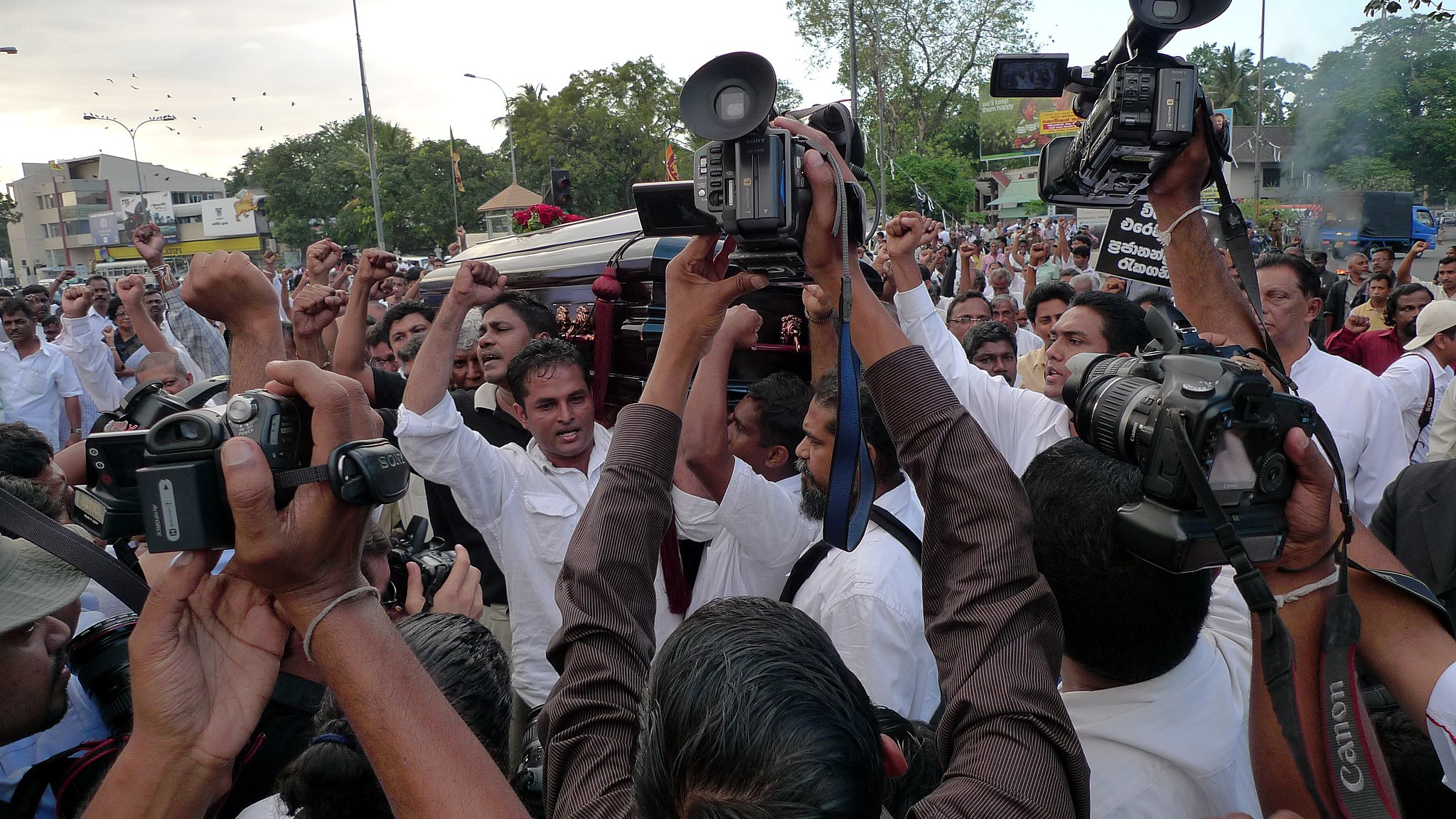
Civil War (1983-2002, 2006-2009)
Sri Lanka endured a brutal civil war between the Government of Sri Lanka and the Liberation Tigers of Tamil Eelam (LTTE) from 1983 to 2002 and again from 2006 to May 2009. The war arose out of increasing conflicts between the Sinhalese majority and the Tamil minority in the years following independence from colonial rule, leading Tamil groups such as the LTTE to call for an independent Tamil state.
The final phase of the war was marked by gross human rights violations and serious violations of international humanitarian law. A U.N. Panel of Experts found evidence of crimes committed by both the Sri Lankan forces and the LTTE, and found that as many as 40,000 civilians died in the final stages of the war.
Campaign Against Press Freedom Under the Rajapaksa Regime (2005-2015)
Mahinda Rajapaksa served as the President of Sri Lanka from November 2005 to January 2015, overseeing the final years of the war. Mahinda appointed his brother, Gotabaya Rajapaksa, as the Secretary of Defense, placing him in control of the government’s military, intelligence, and police forces. A number of other members of the Rajapaksa family also held prominent political positions during Mahinda’s presidency.
The Rajapaksa regime was particularly sensitive to criticism of the war effort, preventing journalists from traveling to LTTE areas and labeling journalists reporting on abuses committed by the Sri Lankan government as “Tiger sympathizers.” The security forces launched an assault on the free press, routinely harassing journalists and media workers. Although the government denied playing a role in the abductions, assaults, and killings of journalists, a number of attacks have been traced back to government security forces. The Rajapaksas also arrested, deported, and sued journalists, and enacted laws restricting free press, all in an attempt to silence dissent.
The U.N. Panel of Experts found that the attacks on journalists were widespread, and that they systematically targeted individuals critical of government policies. Despite these serious abuses, almost none of these attacks were seriously investigated by the police under the Rajapaksa government. In 2015 the Committee to Protect Journalists ranked Sri Lanka sixth on its impunity index, based on a calculation of the number of unsolved journalist murders relative to a country’s population. The number of attacks and the level of impunity caused many journalists to practice self-censorship or flee the country.
Current Politics (2015 to now)
In 2015, Mahinda lost the presidency to Maithripala Sirisena, who promised to re-open investigations into human rights abuses committed during the Rajapaksa regime. A number of cases involving attacks against journalists were initially reopened, revealing the government’s involvement in these crimes.
Nevertheless, the Rajapaksa family has continued to exert political influence over the new administration. President Sirisena recently criticized efforts to investigate abuses committed by the military, and in October 2018, he provoked political turmoil by dismissing the sitting Prime Minister and replacing him with Mahinda Rajapaksa. Although Mahinda stepped down in December 2018, this political situation has made it difficult for investigations against the Rajapaksa government to progress, and continuing impunity for crimes against journalists remains a serious problem. On November 16, 2019, Gotabaya Rajapaksa was elected as President of Sri Lanka. Since his election, investigators involved in high profile human rights investigations-including the murder of Lasantha Wickrematunge – have been threatened and arrested, some forced to flee Sri Lanka. Journalists have been forced into exile or to otherwise practice self-censorship. Suspected human rights abusers have been appointed in high-level positions, and democratic institutions have been seriously eroded.